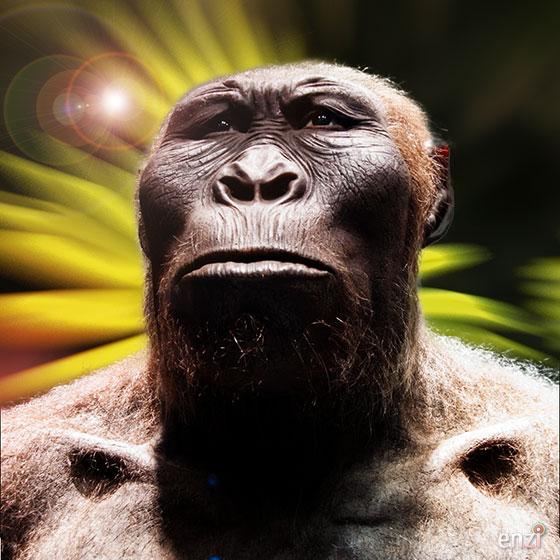People used to think of a ladder, with species gradually evolving upwards until they arrived at the perfection that is humanity. Now we know it’s more of a bush, with different species splitting off and becoming adapted to their own environment; and the human family is no exception. We’re simply the last surviving member of a diverse bunch of upright apes.
Some of the most peculiar members of our lineage are the Paranthropines, a group of species that lived in Africa between 2.7 – 1.5 million years ago; back when we still looked like Lucy. They have a range of adaptations suited to chewing. Wide cheek bones accommodate large chewing muscles; huge jaws deal with the stress involved and there’s even a crest on the top of their skull for the muscles to attach too. The result of all this is something that looks distinctly un-human; and it’s bizarre to think that this alien looking creature is more closely related to us than chimps are.

Paranthropus (left), what we looked like at the time (centre) and what we evolved into (right)
All of these unique adaptations are clearly designed to chew. In fact, when the first Paranthropine was discovered it was nicknamed “nut-cracker”! However, stable isotope analysis has revealed their diet was very different from what you might expect; and this has some fascinating implications for our own evolutionary history.
Stable isotope analysis is based on the fact that there are slightly different versions of elements (each version being known as an isotope). The ratios of some of these isotopes remains the same over time; and consistently varies between plant species. As you eat these plants, the elements (in that ratio) are preserved in your bone, allowing scientists millions of years later to figure out what you were eating.
And when stable isotope analysis was performed on the Paranthropines; it was found they weren’t eating a tough food that required a lot of force from their massive jaws. Rather, it seemed they were living almost entirely off grass. They were grazers and their unique dentistry was an adaptation that allowed them to chew for hours at an end, which is something you need to do if you’re living off something as low calorie grass. These were literally human cows.

Paranthropus: heroic human cow!
However, if you look at the human diet we also consume a lot of grass. Specifically cereals, mostly in the form of bread. Grasses still make up between a third and a half of our daily calories, yet we have some of the most gracile anatomy in our entire family. Tiny jaws, tiny teeth and rather pathetic muscles. Yet if it wasn’t the input that’s different, why do humans and Paranthropines look so different?
The answer seems fairly obvious: we cook and process our food. We heat it up, breaking down cell walls and making it easier to digest. We turn cereals into bread, which is a lot more calorie rich than just eating stalks of wheat all day. We use tools to cut it up into manageable pieces.
In short, the reason we don’t look like human cows isn’t because the food has changed or because our environment is different ; but because of our behavior. As a species we’ve innovated, changed how we do things and our anatomy has changed as a result. We are the thinnest, weakest member of our family because we’re the smartest. We’re so smart we’ve changed the course of our own evolution.
And to me, that’s fascinating. I wonder where we’ll go next.

